Labor and delivery is the most physically fraught time for mothers and infants. The process of safely bringing a baby into the world is often complicated, no matter how the delivery occurs. However, there are some critical differences between traditional labor and Caesarean sections (C-sections).
Many assume that traditional labor is harder on infants and Caesarean sections are harder on mothers, but a recent study suggests otherwise. The paper focused on the risk of obstetric fractures, a common type of birth injury that can have ongoing impacts on a baby’s health. According to this study, C-sections pose a significantly greater risk of fractures and associated complications than natural births.
C-sections can be a life-saving procedure for both mothers and babies. However, many hospitals may be too quick to recommend Caesarean deliveries, leading to unnecessary and permanently damaging birth injuries. Keep reading to learn more about how C-sections put infants at risk and what you can do if you believe your child was harmed by an unnecessary C-section.
Why C-Sections May Lead to More Birth Injuries
“Obstetric fractures in caesarean delivery and risk factors as evaluated by paediatric surgeons” was published in International Orthopaedics, a medical journal dedicated to the care of the musculoskeletal system. This study was performed to determine what factors put babies at greater risk of obstetric fractures, and clavicle fractures in particular.
These breaks are one of the most common kinds of birth injuries and occur in up to 3.5% of all births. The authors hypothesized that there may be a difference in the risk of birth injury fractures between natural deliveries and C-sections. They chose to analyze the outcomes of a wide variety of births to determine any associations.
Their results were surprising. The study found that despite the pressure put on infants during delivery through the birth canal, Caesarean deliveries were more likely to cause fractures. In fact, C-sections were 7.82 times more likely to lead to fractures than natural deliveries.
The study was a retrospective analysis, so the authors were cautious in drawing conclusions about how C-sections put infants at risk. The discussion within the paper suggests that these birth injury fractures may be correlated with the complications involved in performing Caesarean deliveries. Issues like using tools during delivery may increase the risk of these fractures occurring compared to natural births, in which tools are less frequently used.
Unnecessary C-Sections May Cause Avoidable Injuries
While other studies regarding C-section birth injuries have concluded that fractures during labor and delivery may not be avoidable, the authors of the International Orthopaedics paper came to a slightly different conclusion. They determined that the risk of fractures and associated complications, such as Erb’s palsy, were higher for C-sections than natural births, regardless of the reason. As such, they argue that C-sections should not be performed unless necessary to reduce risk to the baby.
This is a significantly different attitude than that of many OB/GYN medical professionals. A Consumer Reports investigation has determined that different hospitals have dramatically different rates of Caesarean deliveries, even among mothers with low-risk pregnancies. The investigation found that one California hospital had C-section rates of 55% among these low-risk mothers, while another in the same city had a C-section rate of just 15%. The factor responsible for this dramatic difference appears to be the professional and institutional attitudes of the team at each hospital.
Some hospitals and medical professionals are quick to suggest C-sections for reasons such as:
- Speed: While a Caesarean delivery makes a mother’s recovery longer, it is significantly faster for the OB/GYN team. Some overcrowded hospitals may push C-sections to get people in and out faster despite the risks they pose.
- Staffing: Similarly, an understaffed facility may cause a medical professional to recommend an otherwise unnecessary C-section to reduce the risk that multiple mothers are in critical stages of delivery at the same time.
- Sensitivity to risk: Hospitals that have faced lawsuits in the past may be hypersensitive to legal risk and push for C-sections to avoid claims that they failed to respond to signs of fetal distress. Ironically, this can cause significantly more avoidable birth injury fractures in the long run.
The Lifelong Impact of Birth Injuries
Regardless of the cause of a birth injury, fractures and other harm can permanently affect your baby. C-section birth injuries can lead to disabilities such as:
- Cerebral palsy: A lack of oxygen to the brain caused by mistakes made during a C-section can lead to cerebral palsy, which often causes motor disabilities and learning disorders.
- Erb’s palsy: Also known as brachial plexus birth palsy, this syndrome is caused by damage to the nerves controlling the arms and shoulders. Children struggle to use their hands and may require years of physical therapy to retrain their bodies to do what should have been natural.
- Brain injuries: Depending on the part of the brain affected, a birth injury could lead to permanent learning disabilities, impaired mobility, poor emotional regulation, and many other lifelong symptoms.
Connect With Expert Birth Injury Malpractice Attorneys
If your child suffered from a fracture or other injury during an unnecessary C-section, you might have grounds for a medical malpractice claim. If you were pushed into agreeing to a Caesarean delivery for reasons other than medical necessity, your child’s injury might have been avoidable. At the Law Offices of Michael Oran, A.P.C., we can help you stand up to the hospital or doctor responsible for your baby’s unnecessary suffering.
Our team has the skills, resources, and experience necessary to evaluate your case and determine if you have a claim. Suppose our evaluation of your medical records and other evidence suggests that someone’s negligence led to the birth injuries. In that case, we will provide you with dedicated legal advocacy in the fight for the compensation you and your child deserves. Learn more about how we can assist you by scheduling your consultation today.






